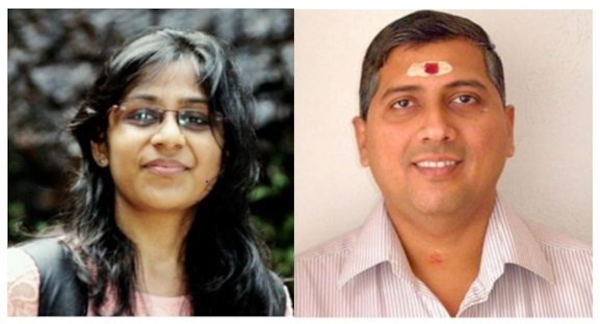A team of researchers of the Indian Institute of Technology (IIT) – Madras has developed a new approach for the development of robust early warning systems for earthquakes through accurate detection and picking up of the first set of seismic waves.
When an earthquake occurs, it produces a series of seismic waves. The first set of waves is called the P-wave and t is harmless. Its onset detection is of vital importance because a good estimate of the time of its arrival would help in developing a robust early warning system that could give a lead time before the next set of destructive waves, hit the ground. The lead time could vary from 30 seconds to 2 minutes, primarily depending on the distance between the location of the epicentre location and the monitoring site.
On the face of it, the lead times may seem minor. But they are significant. They are sufficient to shut down the nuclear reactors, transportation such as metro, and to park the elevators in high rise buildings at the nearest floor, among numerous other measures that can save lives.
All the existing P-wave onset detection methods are based on a combination of statistical signal processing and time-series modeling ideas. However, these methods do not adequately accommodate some advanced ideas. When combined with what is called a time-frequency or temporal-spectral localization method, the effectiveness of such methods can be enhanced significantly.
A team of researchers of the Indian Institute of Technology (IIT) – Madras has developed a new approach for the development of robust early warning systems for earthquakes through accurate detection and picking up of the first set of seismic waves.
The new study at IIT fills this gap. It proposes a novel real-time automatic P-wave detector and picker in the prediction framework with a time-frequency localization feature. The proposed approach brings a diverse set of capabilities in accurately detecting the P-wave onset, especially in what is called low signal-to-noise ratio (SNR) conditions that all the existing methods fail to attain.
This research was undertaken by Ms Kanchan Aggarwal, who is a PhD Scholar under the guidance of Prof. Arun K Tangirala of the Department of Chemical Engineering, IIT Madras. A report on their study has been published in the science journal PLOS ONE. The research was partially funded by the Board of Research in Nuclear Sciences, an advisory body of the Department of Atomic Energy.
Highlighting the practical applications of their work, Prof. Tangirala said, “The proposed framework is not necessarily limited to the detection of seismic events but is generic. It can be used for fault detection and isolation in other domains as well. Furthermore, it can incorporate any predictive models including the Machine Learning and Deep Learning models, which will reduce the human intervention in the detection.”
Ms. Aggarwal said, “Information of P-wave arrival is also crucial in determining other source parameters of the event such as magnitude, depth and epicentre location. Therefore, a solution to the P-wave detection problem that is robust, accurate, and precise is essential to estimate the event details correctly and to reduce the damage caused by the earthquake or other triggered events.”
You may also like
-
New Heat-Based Approach To Cancer Treatment Can Reduce Chemotherapy Doses
-
Scientists Take A Major Step Towards Unification Of Classical & Quantum Gravity
-
India Graphene Engineering and Innovation Centre (IGEIC) Under the Vision of Viksit Bharat@2047 Launched
-
New High-Performance Gas Sensor can Monitor Low Level Nitrogen Oxides Pollution
-
Antidepressant Drug can be Repurposed for Treating Breast Cancer
